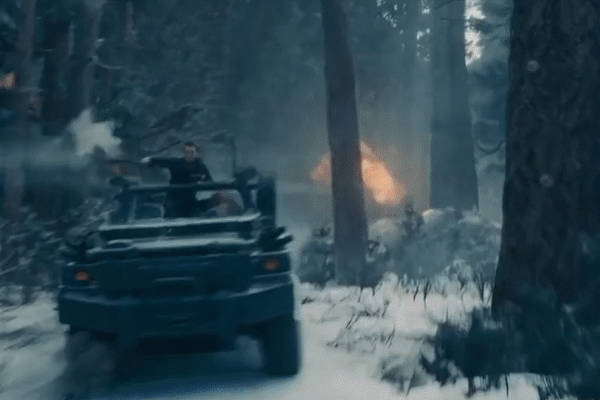

The Hawkeye 105 mm Howitzer mobile artillery system developed by Mandus Group looks like something straight out of Command & Conquer. If you don’t believe me, check out this sweet slow-motion video of some lucky 82nd Airborne soldiers testing out the new hotness that popped up on Twitter on August 5.
Utilizing an inventive hydraulic system to reduce recoil, the Hawkeye was designed to lighten a tried-and-true artillery solution enough to allow such a large cannon on a small platform. It can fire up to eight rounds per minute via remote for three minutes or three rounds per minute sustained, and the mobility of the Humvee allows a small crew of between two and four to rapidly deploy the suspension system, fire, and get out of dodge within 60 seconds — or before counter-battery fire can hit back.
The lightweight nature of the Hawkeye makes it ideal for expeditionary fire support. Unlike mortars such as the 120 mm mobile variant the U.S. Army is currently eyeing for soldiers, the Hawkeye can support troops with direct fire, whereas mortars are only able to provide indirect fire.
The Hawkeye system has other advantages. The deployed suspension system eases wear and tear on the Humvee compared to a 120mm system that shoots from a free chassis. Over time, even the best suspension systems will feel 100,000 lbs of force right to the baseplate; you can see that force punishing the vehicle in the 82nd Airborne footage.
The 105 mm also has a range advantage on 120 mm mortar systems, reaching out to strike enemies at up to 11 miles compared to the latter’s limited accuracy of up to five miles. Interestingly, this is a boon for maintenance and readiness: the Army’s Humvee system and supply line is already well-entrenched in the current force structure, allowing for an easier integration into then a whole new vehicle system.
But the biggest advantage is the Hawkeye’s ability to cover distance quickly over rough terrain make the classic shoot and scoot a breeze, a key advantage over traditional towed 105 mm systems. An experienced counter-battery team can locate and shoot effectively a bit over a minute after a round lands, but the Hawkeye system looks to be able to pivot from position to position, out-maneuvering counter-battery attempts to eliminate the threat.
It’s worth noting that the Hawkeye’s rate of fire is roughly equal to the towed and manually loaded and fired howitzer variants (versus the remote control fired Hawkeye), which can put out up to six rounds a minute. This sweet rate of fire loses some meaning knowing that the U.S.’s main near-peer threats, namely Russia and China, field artillery that is much longerin range the 105 mm howitzer, however this may be less of a problem on a conventional battlefield as mobility could allow the Hawkeye system to out-maneuver the longer ranged systems. In the meantime, the Hawkeye seems like a fine lightweight option for soldiers, if only for the Avengers jokes:

